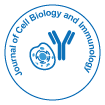Our Group organises 3000+ Global Conferenceseries Events every year across USA, Europe & Asia with support from 1000 more scientific Societies and Publishes 700+ Open Access Journals which contains over 50000 eminent personalities, reputed scientists as editorial board members.
Open Access Journals gaining more Readers and Citations
700 Journals and 15,000,000 Readers Each Journal is getting 25,000+ Readers
Useful Links
Share This Page
Classical immunology
Classical immunology deals with the fields of epidemiology and medicine. Immunology alone is the study of response of an organism to antigenic challenge and its recognition of what is self and what is not. It deals with the defence mechanisms including all physical, chemical and biological properties of the organism that help it to combat its susceptibility to foreign organisms, material, etc. Classical immunology deals with the relationship between the body systems, pathogens, and immunity.
Related Journals of Classical immunology
Journal of Stem Cell Research & Therapy, Journal of Molecular and Genetic Medicine, Journal of Immunobiology, Journal of Molecular Immunology, Journal of Allergy & Therapy, Journal of Clinical & Cellular Immunology, Immunome Research, International Journal of Inflammation, Cancer and Integrative Therapy, Rheumatology: Current Research
